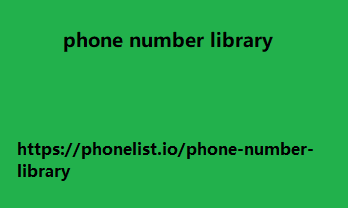In e-commerce websites, Floating Action Buttons (FABs) can significantly streamline the shopping experience by providing a direct, one-tap path to key actions like adding items to a cart, viewing the cart, or proceeding to checkout. Since mobile users are often on the go and prefer quick, convenient interactions, FABs can reduce friction by keeping important actions accessible at all times. By integrating a FAB into the shopping process, you can allow users to perform essential tasks without interrupting their browsing or forcing them to navigate through multiple pages. This can lead to higher conversion rates and a more satisfying mobile shopping experience.
A common use of FABs in e-commerce is for managing the shopping cart
As customers browse through your store on their mobile devices, a FAB can sit at the bottom of the screen, allowing them to quickly add items to their cart qatar phone number library without leaving the current page. For example, tapping on a product’s FAB might add it to the cart and bring up a small notification confirming the action. This eliminates the need for users to manually go to a cart page and click “Add to Cart.” Similarly, a FAB could allow users to view the cart instantly without having to go to a dedicated cart page, making the process much quicker and more seamless, improving the likelihood of a purchase.
FABs for Fast Checkout
Once a user is ready to complete their purchase, a well-positioned FAB can provide instant access to the checkout process. With one tap, users can proceed from browsing to finalizing their order, bypassing the need to navigate to a checkout page or fill out lengthy forms. A “Proceed to Checkout” button in the form of a FAB can minimize clicks and speed up the transaction, which is crucial for mobile users who expect quick, frictionless experiences. This reduces the chances of cart abandonment, a common issue in mobile e-commerce, by ensuring that the path to completing the purchase is as streamlined as possible.
FABs for Upselling and Cross-Selling
FABs can also be leveraged for upselling and cross-selling in a non-intrusive way. For example, after a user adds an item to their cart, a FAB could offer a special deal or suggest complementary products. This could appear as a FAB that says, “Add matching accessories” or “Complete the look.” Because the FAB stays visible and accessible while users browse, it offers a subtle, convenient reminder to consider additional purchases. This approach encourages higher average order values without disrupting the shopping experience or requiring users to leave their current page.
Tracking and Optimizing FABs for Conversions
To maximize the impact of FABs on your e-commerce site, it’s essential to track their effectiveness and optimize their placement and call center cybersecurity: 3 threats to consider functionality. Use analytics tools to measure how often users interact with FABs, which actions they trigger, and how this influences conversions. For instance, you might discover that users are more likely to complete a purchase when the “View Cart” FAB is prominent, or when the “Proceed to Checkout” button is placed in the center of the screen. A/B testing different designs, placements, and colors for FABs can help you determine the best combination for driving sales and improving the user experience.
Designing FABs for Maximum Impact in E-Commerce
To be effective in e-commerce, FABs need to be both visually appealing and functional. The FAB should stand out enough to grab attention without aub directory overpowering the content on the page. This can be achieved with bright colors, contrasting with the rest of the page, or with bold, recognizable icons (like a shopping cart or payment icon) that clearly communicate the action users will take. The button should be large enough to be easily tappable, but not so large that it becomes intrusive or distracting. Additionally, the FAB should remain consistent across the site’s mobile pages, with the same size, placement, and behavior, so that users quickly recognize its purpose and become accustomed to its function. Lastly, make sure the FAB is responsive, adjusting its size and positioning based on screen orientation and device size.




